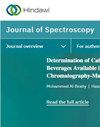Applying Energy-Dispersive X-Ray Fluorescence Analysis to Detect Tungsten Inclusions in Nuclear Fuel Rod End Plug TIG Welds
IF 2.1
4区 化学
Q4 BIOCHEMICAL RESEARCH METHODS
引用次数: 0
Abstract
This study proposes a new method of detecting tungsten inclusions in nuclear fuel rod upper-end plug welds using energy-dispersive X-ray fluorescence (EDXRF) analysis. The Monte Carlo simulation method was used to simulate the process of detecting tungsten inclusions in nuclear fuel rod upper-end plug welds by the EDXRF. The detectable tungsten particle diameters in the zirconium alloy at different depths in welds and the detection limits of the trace tungsten dispersed in welds were obtained. Then, we constructed an experimental device that uses a CdTe detector with an X-ray tube. The results showed that the relative standard deviation of the net count rate of tungsten K-series characteristic X-rays [W (Kα)] was 1.46%, and the optimum parameters are a tube voltage of 150 kV and current of 0.5 mA. These values were used to perform energy-dispersive X-ray fluorescence analysis. These results were compared to the X-ray radiographic results, which were broadly similar. Furthermore, the results of EDXRF analysis were more legible and reliable than those from X-ray radiographic inspections. This study demonstrates the feasibility of applying EDXRF analysis to detect tungsten inclusions.应用能量色散x射线荧光分析检测核燃料棒端塞TIG焊缝中的钨夹杂物
提出了一种利用能量色散x射线荧光(EDXRF)分析检测核燃料棒上端塞焊缝中钨夹杂物的新方法。采用蒙特卡罗模拟方法模拟了EDXRF检测核燃料棒上端塞焊缝中钨夹杂物的过程。得到了锆合金在不同焊缝深度处可检测到的钨颗粒直径和分散在焊缝中的痕量钨的检出限。然后,我们构建了一个实验装置,使用CdTe探测器与x射线管。结果表明,钨k系列特征x射线净计数率的相对标准偏差[W (Kα)]为1.46%,最佳参数为管电压为150 kV,电流为0.5 mA。这些值用于进行能量色散x射线荧光分析。这些结果与x光片结果比较,两者大致相似。此外,EDXRF分析结果比x射线检查结果更清晰可靠。本研究证明了应用EDXRF分析检测钨夹杂物的可行性。
本文章由计算机程序翻译,如有差异,请以英文原文为准。
求助全文
约1分钟内获得全文
求助全文
来源期刊

Journal of Spectroscopy
BIOCHEMICAL RESEARCH METHODS-SPECTROSCOPY
CiteScore
3.00
自引率
0.00%
发文量
37
审稿时长
15 weeks
期刊介绍:
Journal of Spectroscopy (formerly titled Spectroscopy: An International Journal) is a peer-reviewed, open access journal that publishes original research articles as well as review articles in all areas of spectroscopy.
 求助内容:
求助内容: 应助结果提醒方式:
应助结果提醒方式:


